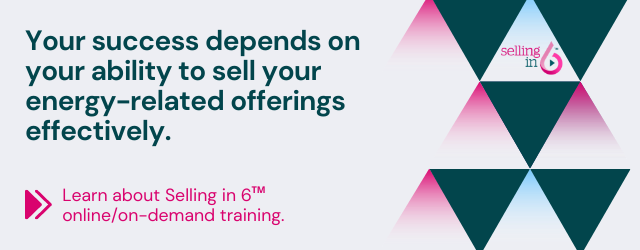Considering our current economic situation, customers are always looking for a deal. So, how do you prevent a situation where the sale is price-driven?

I have some tips for escaping that kind of pressure, gleaned from one of my favorite business books, Escaping The Price Driven Sale. Based on my 40+ years of sales experience, I can assure you that these strategies are particularly useful in addressing pricing constraints that often accompany economic downturns.
- Offer an unanticipated opportunity or solution. This is one way to differentiate yourself from lower-price competition. There are a variety of ways to do this. The first is emphasizing the non-utility-cost financial and non-financial benefits. Perhaps better lighting would attract more customers to a retail space (especially once social distancing wanes) or more tenants to a multifamily residential building. Maybe it would improve the morale in a workplace or the enhanced visibility would reduce scrap rate or shipping errors. Whatever the benefits are, those are valuable secondary benefits that are definitely worth exploring with a prospect, particularly those who need to be convinced that an energy-related upgrade could be legitimately classified as “essential spending.”
- Be helpful by pointing out (and preventing) potential pitfalls. Reliability and quality are paramount in making a decision about efficiency. I’ve seen vendors get increased market share by giving prospects tips on how to avoid getting scammed by cheaper products and unskilled installers. Doesn’t every prospect deserve to get the best advice and service possible? You can give them both, and doing so is an excellent way to build rapport.
- Remind them that your offerings will make their businesses (or homes) more competitive, profitable, and valuable. Change can be scary, so you need to remind your prospect that the improvements you’re proposing are not only worthwhile, but also necessary to help them regain their financial footing in these difficult economic times. Of course, you need to have the anecdotes and research to back up your claims (that’s why our Segment Guides™ is such a helpful resource). Provided you have that evidence, you’ll be able to stand out from the crowd not only as a vendor, but as someone who is championing their cause.
- Bring a Digits to Widgets™ mentality to your discussion. Imagine telling someone, “At your industry’s average net profit margin of 2%, the $10,000 savings that this retrofit is projected to generate equates to $500,000 in revenue generated last year. And since your facility has missed at least that much revenue as you were ramping back up in the wake of pandemic-related supply constraints, here’s a way to help salvage your P&L’s bottom line.” Keep in mind that many small and medium-sized businesses have taken out loans and their staff are currently on unemployment. They have just enough cash to get them through. They may see the pandemic as a short-term setback, and with the addition of some historically low-interest-rate capital, you have a good shot at convincing them to invest in expense-reducing capital projects and have the work done while their facility is less occupied than usual.
All in all, this pandemic can lead to some interesting twists in sales situations. I’ve always told my students that you need to talk like a business person rather than a “bits, bytes, and blinking lights technologist,” identify with what your prospects care about, and reframe your value proposition so it aligns with what makes a decision maker in that particular industry tick.







